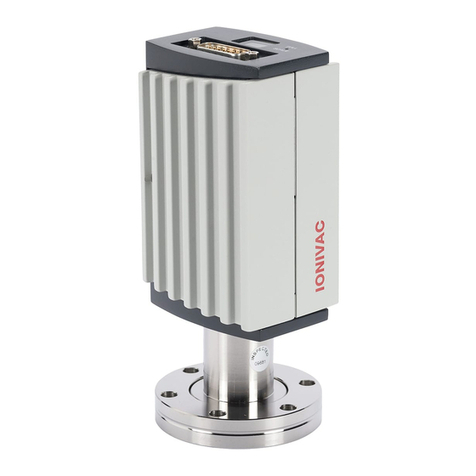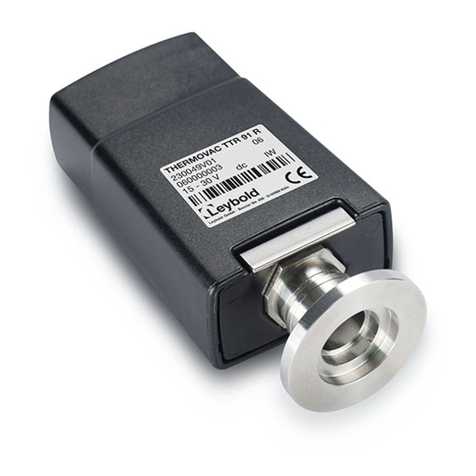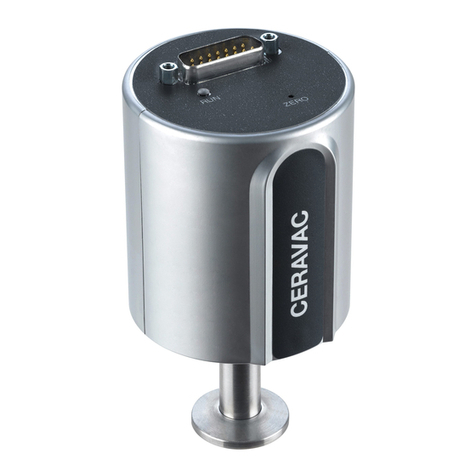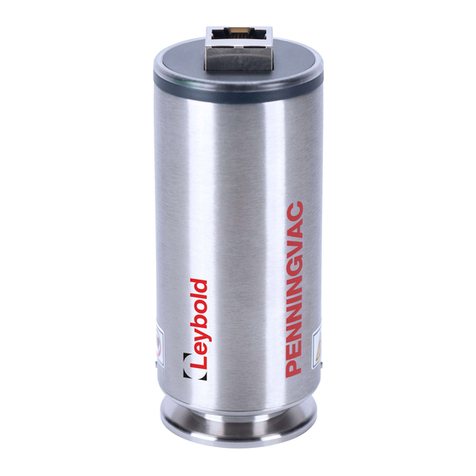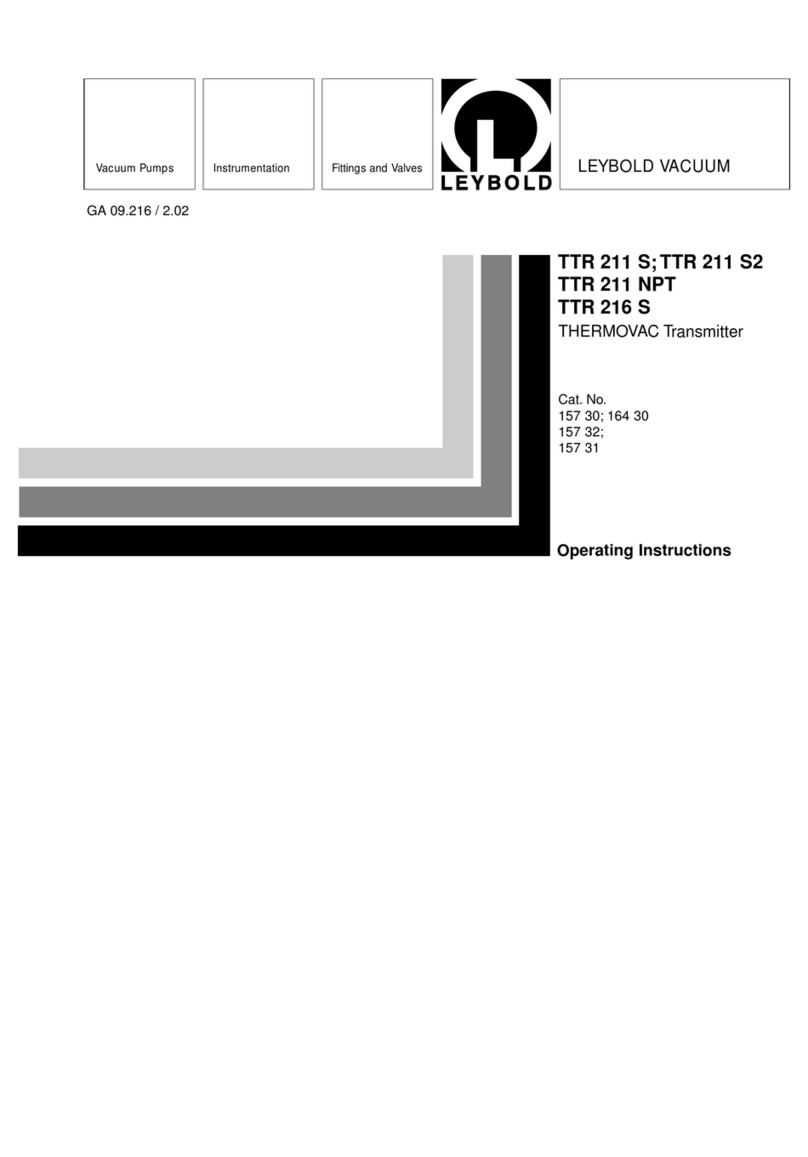
7 300544655_002_C1 - 11/2016 - © Leybold
Description
The TTR 101 N THERMOVAC series vacuum transmitters offer a wide measuring range from 5×10-5 to 1500 mbar
and are based on the measurement of thermal conductivity in a small cavity on a MEMS Pirani silicon chip sensor
and mechanical deflection of a silicon membrane in a Piezo sensor.
Transmitter versions with an RS232 digital communication interface (P/N: 230366V02) and EtherCAT digital
communication interface (P/N: 230702V02) can set up transmitter parameters and provide real time pressure
measurement. Please see the Communication Protocol 300544663 (RS232) and 300544664 (EtherCAT) for further
details. Transmitter versions with an integrated touchscreen display (P/N: 230354V02, 230355V02, 230356V02)
have the possibility to monitor essential transmitter parameters. Please see chapter 0 for further details.
The TTR 101 N THERMOVAC transmitters can be used in a variety of applications as standalone unit or with
Graphix controllers (P/N: 230680V01, 230681V01, 230682V01) and the Display controllers (P/N: 230001, 230024,
230025). All THERMOVAC transmitters are backward compatible with Graphix, Display and Center controllers.
Each transmitter is individually tested throughout the measuring range before leaving the factory. A test report is
included in the package. In addition, each transmitter pressure reading is individually temperature-compensated
within the specified operating temperature range.
The transmitters have up to three mechanical relays which can be used for process control, for example
interlocking valves or pumps. The analog voltage output can be interfaced to external analog equipment for
pressure readout or controlling.
Sensor technology
The transmitters contain two separate sensor elements. The MEMS Pirani (MEMS = Micro-Electro-Mechanical-
System) sensor element is based on measurement of thermal conductivity. The MEMS Pirani sensor consists of a
silicon chip with a heated resistive element forming one surface of a cavity. A cover on top of the chip forms the
other surface of the cavity. Due to the geometry of the sensor, convection cannot take place within the cavity and
consequently the sensor is insensitive to mounting position. Gas molecules are passed by diffusion only to the
heated element where the heat loss of the gas is measured.
The Piezo sensor is based on measurement of the mechanical deflection of a silicon membrane relative to an
integrated reference vacuum. The Piezo measures true absolute pressure independent of gas composition and
concentration.
Both sensor elements are very robust and can withstand high G-forces and instant air inrush.
Applications
The transmitters can be used in many different vacuum applications within the industrial application, research and
development, semiconductor, analytical and coating industries:
Loadlock pressure controlling
General vacuum pressure measurement
Fore line and roughing pressure measurement
Gas backfilling measurement and controlling
Mass spectrometer control
Activation of UHV gauge
System process control
Sense abnormal pressure and take appropriate security measure using set point relays
Control system pressure
Disposal
The TTR 101 N THERMOVAC transmitters are manufactured according to the RoHS directive.
For the benefit of the environment, at the end of life of the transmitter, it should not be disposed in
the normal unsorted waste stream. It should be deposited at an appropriate collection point or
facility to enable recovery or recycling.
